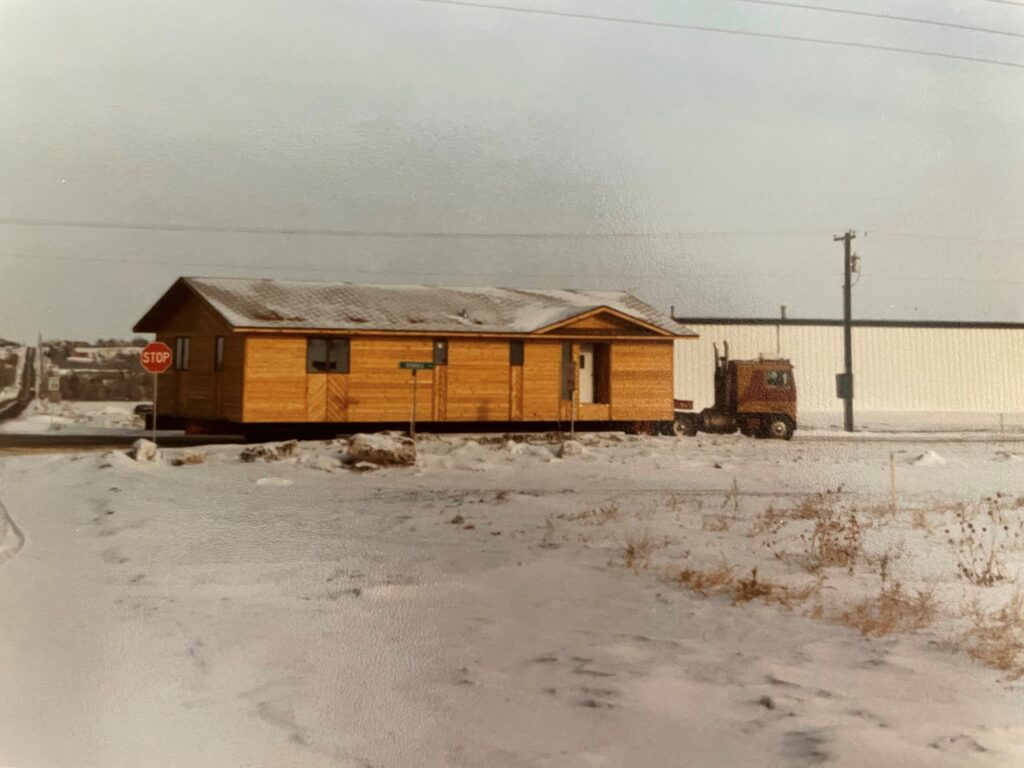Roger Kjonaas
Roger has extensive knowledge and experience in building, design, building science, IAQ, and construction defect resolution.
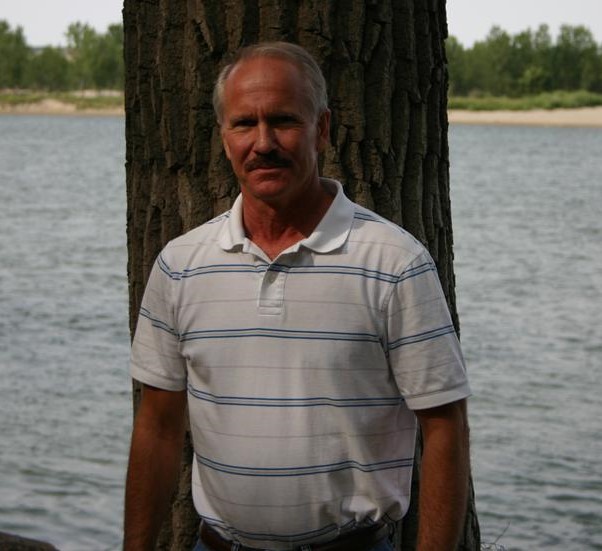
After attending BSC and NDSU, Roger went to work for the largest home builder in the state and was quickly promoted to Production Manager. By the age of twenty-two, Roger was managing the construction of more than fifty houses at the same time.
Having a science professor for a father influenced Roger to look at home construction from a science perspective. This led him to studies in Building Science and the advanced construction methods being developed in Canada and Europe. After analyzing all of the research data he could find, Roger developed a building system that he believed to be the best, science-based, building system for the harsh climate of North Dakota.

Being young in age, it was difficult to get potential homebuyers to take his radical deviation in building methods seriously. Roger did, however, attract the attention of two modular home building companies that hired him as a consultant to develop their building systems based on Building Science.
Roger also caught the attention of the executives of the, soon to be built, ANG Coal Gasification Plant and they also retained Roger as a consultant. As a consultant to ANG's architects, Roger’s advanced construction methods were specified and used in more than 50 homes that ANG built for their employees, including their executives.
After experimenting with and fine-tuning his building system, Roger established "Super Homes" in 1984. The building system that Roger perfected in 1984 is the same system he used in the last house he finished in 2018.
Roger's building system is based on "Building Science" and provides homeowners the ultimate in comfort, health, and energy efficiency, while controlling water vapor and protecting the building envelope from mold and decay.
When made aware of building science, including indoor air quality, it was an easy choice for homebuyers to make, the energy savings more than paid for the extra cost to build a science based home and it provided the best protection for the health of their family.
Almost 40 Years Ago
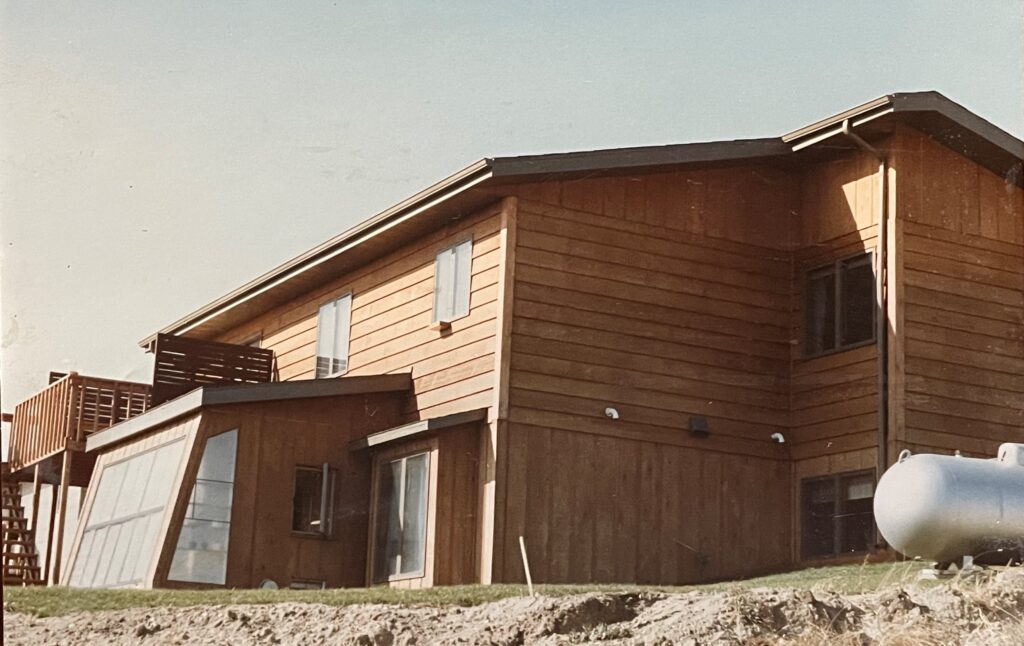
In January of 1983, Richard and Phillppa Lack called Roger about a problem with their home. They had moved to ND from England to help engineer the ANG Coal Gasification Plant and Roger was the designer/building science consultant on many of the homes built by ANG and their executives, The problem was, even though the outside temperature was sub-zero, their home was too warm. The obvious response was for them to turn the heat down.
Unfortunately, it wasn't that easy, their furnace was turned off. Their super-insulated, passive solar home, also had a super-insulated wood foundation, instead of concrete and didn't have the thermal mass needed to absorb and store the excess heat produced. The house heated for around $140 a year, so the Lack's weren't unhappy, but a valuable lesson was learned.
Roger's first Super Home
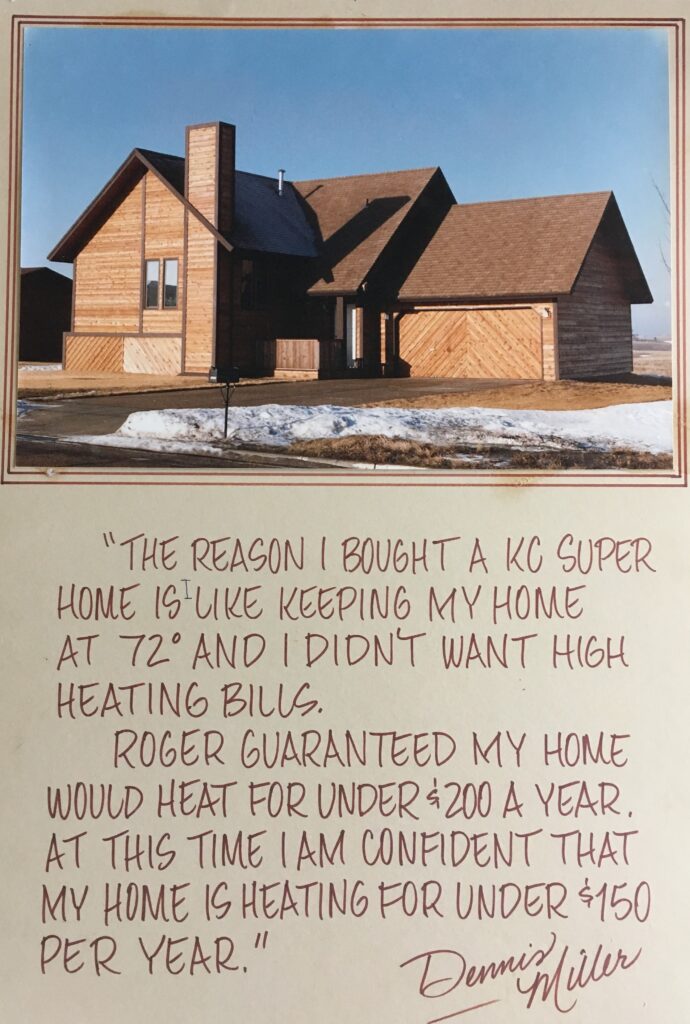
This home, displayed on a poster for a Home Show, was built in 1984, the first home built by KC Super Homes, a partnership between Roger and Bill Clairmont.
Knowing how his homes had performed, using his building methods, Roger guaranteed that his homes would heat for less than $200 a year and he never had a complaint.
This Super Home had Roger's innovative wall system that incorporated two R-5 thermal breaks using a 2x4 wall with a spacer and a 2x2, with closed cell polyurethane foam insulation. This wall system provided a R-40 wall with a R-10 on the studs of the exterior wall system. The home performed incredibly well.
It is hard to understand, in the past 40 years Roger has never built a home without a balanced mechanical ventilation system to protect the health of his clients, but even though there is now a greater need because of how homes are built, the majority of the homes built in the state have inadequate ventilation . This is harming the health and lives of too many trusting families.
In the past few years, energy efficient, healthy homes have become common around the country, they were first called super-insulated, then Passive Houses and now with the capability of bringing the heating and cooling cost down to zero, with alternative energy sources, they are called Net-Zero homes. Roger's homes would have easily qualified, put a solar system on Roger's homes and the heating cost would be Net-Zero.
Media & Speaking
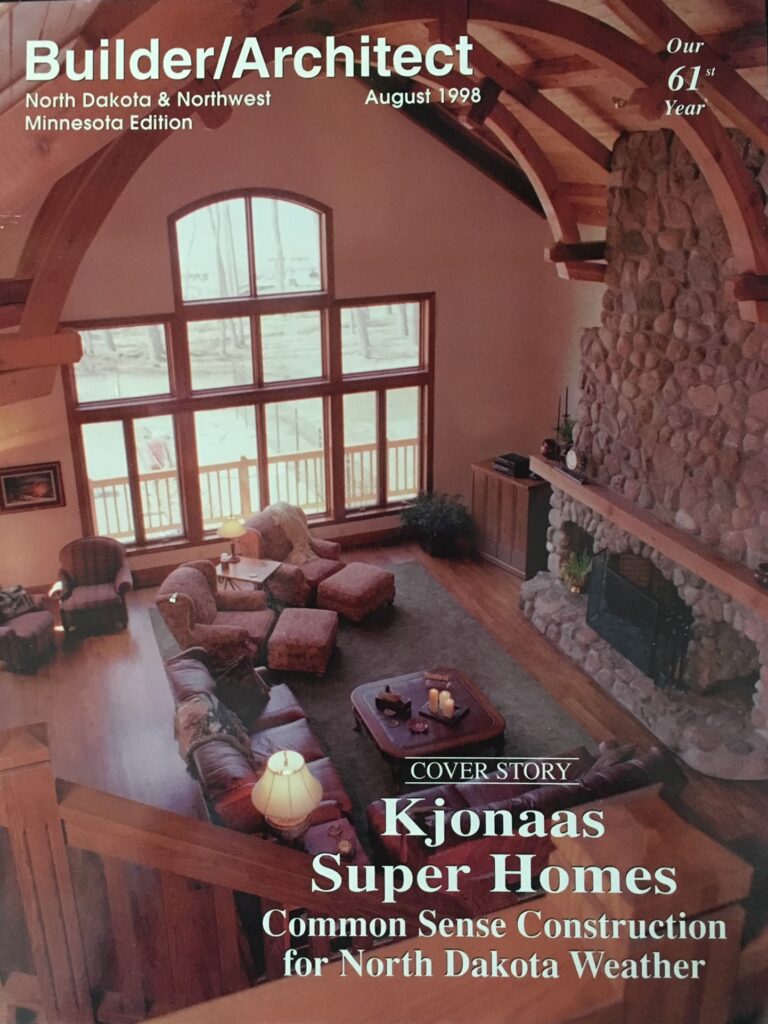
Over the years, Roger's expertise in Building Science has attracted the media, this included; several news stories on KFYR and KXMB TV, the last to air in 2013; several articles in the Bismarck Tribune, including one full page cover story; several articles in the REC Magazine, including one Roger authored. Roger's "Energy Tip of the Day" was heard, for a period of time, on KBMR AM Radio.
Roger's Super Homes were used by North Dakota State University, during seminars they conducted to educate the state’s college and high school vocational instructors on Building Science, advanced building methods, and indoor air quality control systems.
Roger was a guest speaker at a seminar, conducted by the State of North Dakota, to inform architects and engineers on developments in Building Science, the technical issues and problems involving existing building practices, and the benefits of incorporating science based building practices in residential construction.
Roger was invited to be a guest speaker at several other events including the Seven State Bureau of Indian Affairs Housing Conference and the North Dakota State Intergovernmental Affairs Luncheon.
Consulting

When Roger caught the attention of the executives of the ANG Coal Gasification Plant, they retained Roger as a consultant to their architect.
Leon Hagerott was the architect for ANG in the development of their housing design and specification. "Leon is now deceased, but he was the most caring architect I ever had the pleasure to work with and he forever will be an inspiration for me to continue making homes more energy efficient and safe to live in."
Washington D.C. Took Notice
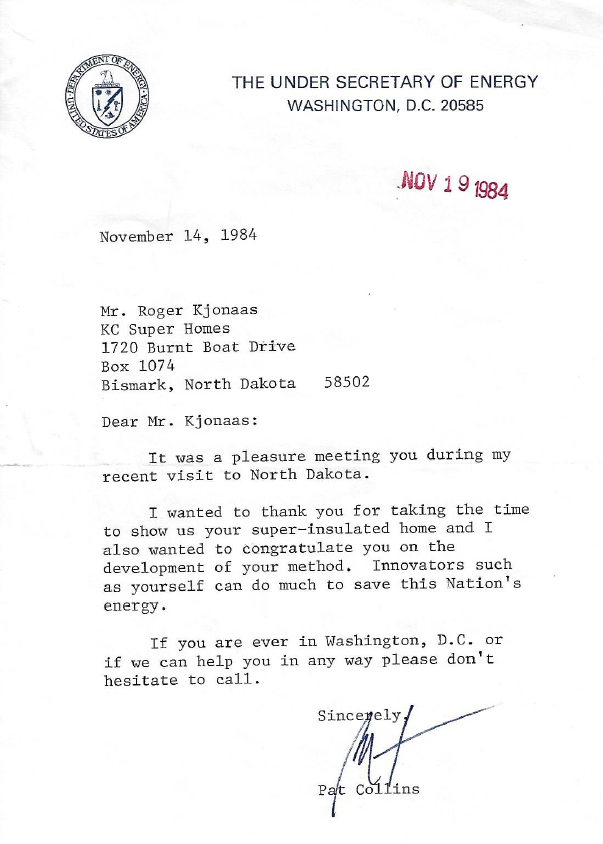
When the Under Secretary of Energy for United States Department of Energy came to Bismarck, he met with Roger to discuss Roger’s advanced building methods and toured Super Homes' construction projects. In 2018, Roger still used the construction methods that Pat Collin's spoke of that Roger developed in the early 1980's.
Design
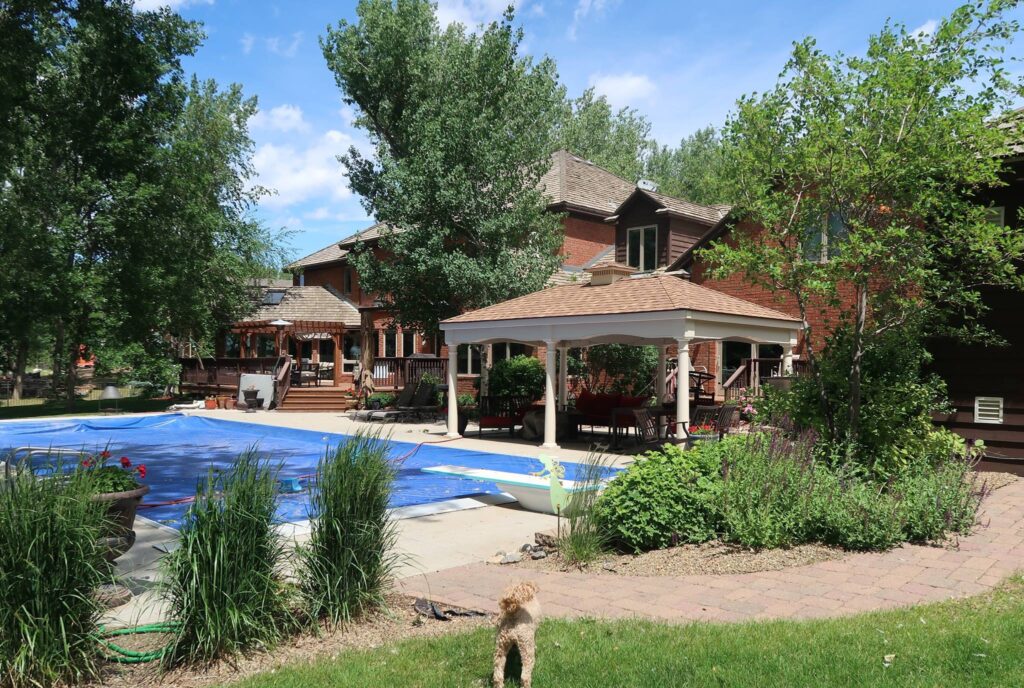
Roger has designed and built many homes, including several that were 8000 sq. ft. to 11,000 sq. ft.; all of which were built with the science-based building system he developed.
In addition to homes, Roger designed the renovation and conversion of a historic hotel into apartments, designed and built Century Medical Park and designed and managed the construction of a major church addition and remodel.
Construction Defect Resolution
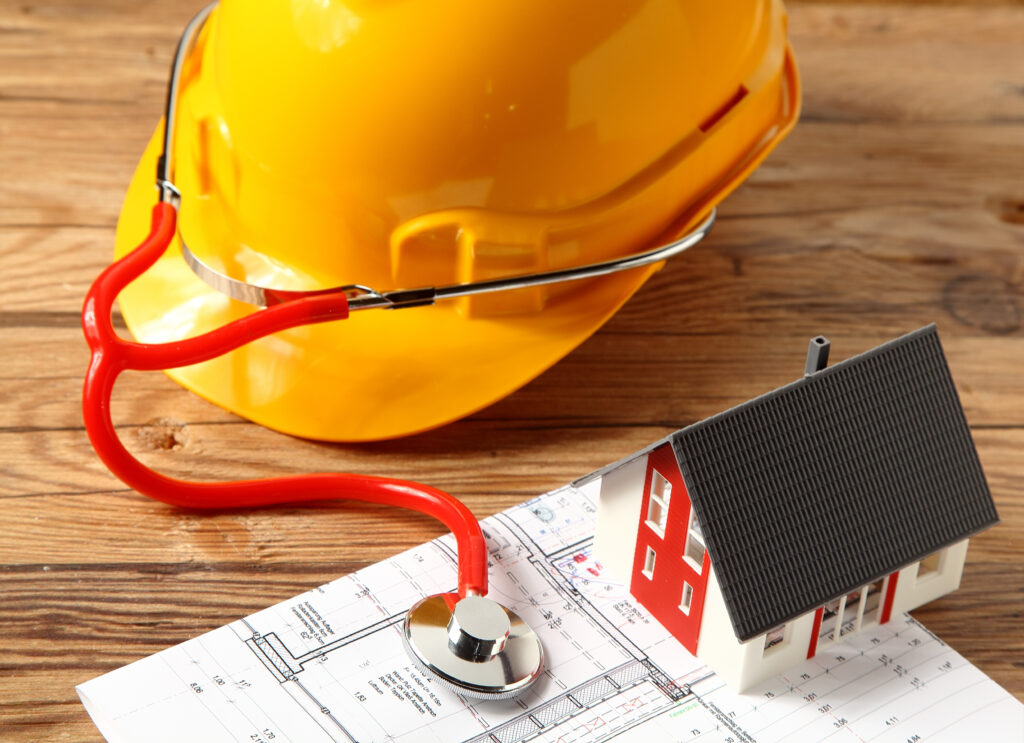
Although Roger does not and will not give legal advice pertaining to ND Law, he has often been retained as a consultant and expert witness on conflicts involving technical construction issues. Roger has been deposed many times and has testified in trial. Most often conflicts were, with the help of Roger's science based opinion and testimony, settled out of court before legal escalation of the cases occurred.
Over the past 30 years, Roger has been retained as a consultant and expert witness in cities throughout the state and on several occasions has been called upon by his competitors in the home building industry to help resolve problems or disputes they were having with their clients.
Thermography

In 1984, Roger started using Infrared Thermography to study and test the performance of different building systems. Back then, thermography equipment was big, bulky, and rare. Infrared scanners were also extremely expensive so the Western Area Power Administration would lend Roger their equipment.
Roger purchased his own infrared scanner in the early 90's, when they cost several times what they do today. Along with attending thermography training seminars, Roger's 36 years of thermography experience gives him great insight into thermal and moisture dynamics along with finding hidden construction defects.
Mold Inspection
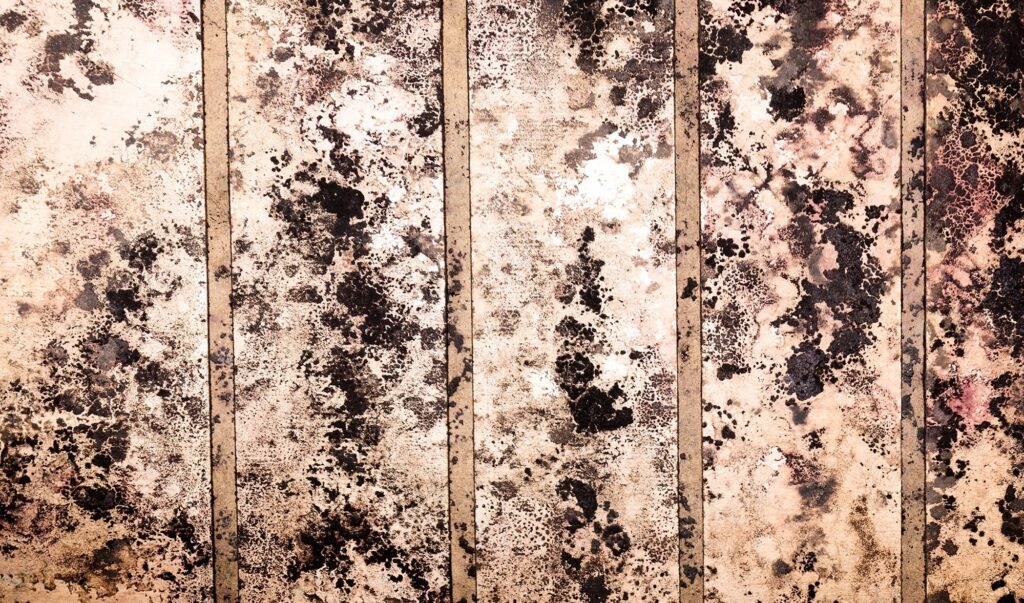
Roger has consulted on many mold issues and was, at one time, a certified mold inspector, but is not currently.
The truth is, even if a house tests negative for mold, it may only mean that there isn't mold blooming at that time. Mold spores are tiny, 250,000 spores can fit on the head of a pin and quite simply, mold spores are everywhere and we are breathing them all of the time.
Mold isn't the problem, water is, whether it is bulk water intrusion or water vapor condensing and accumulating on surfaces, due to poor construction, if you find water, most often you will find mold.
Visionary
"Roger created the Flood Safe Basement System before the flood"
Developed and installed in homes sixteen years before the 2011 flood, Roger's Flood Safe Basement System saved homes from the flood. One river front home on Fox Island, close to 11,000 sq. ft. in size, had a basement over 3000 sq. ft. that was five feet under the flood water elevation, because of the Flood Safe Basement System, the owners didn't remove the basement carpet and it didn't get wet.
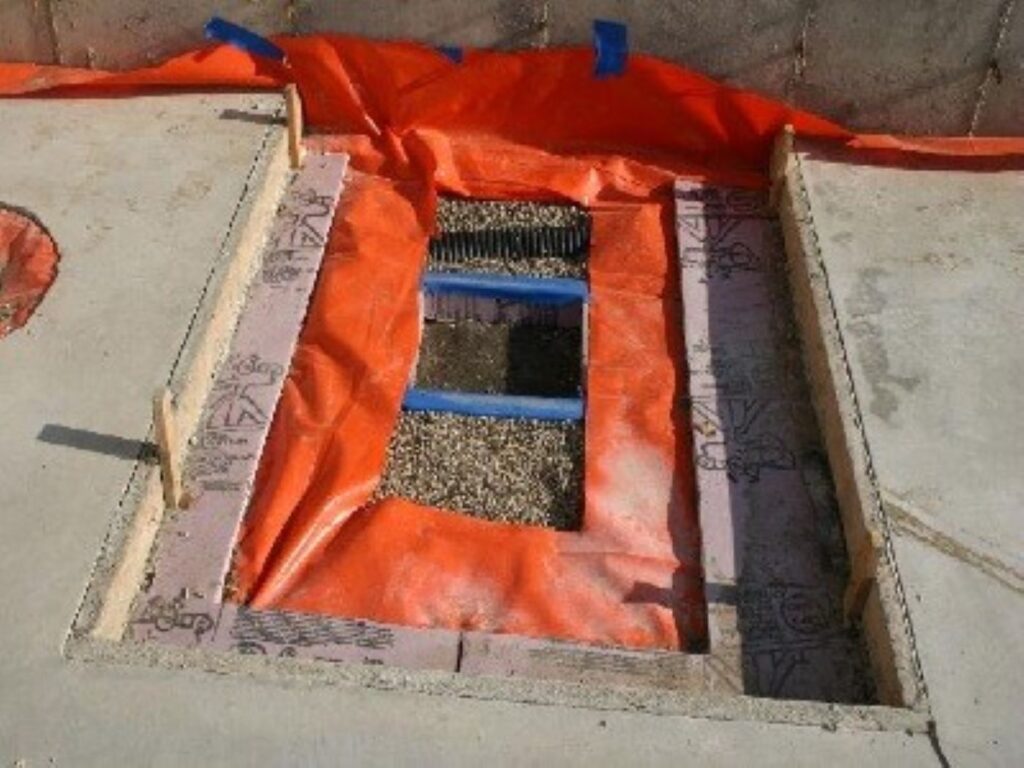
Roger is a true Visionary!
When Roger designed and built our home on Southport, several years ago. he told us; "it was not a matter of if, but a matter of when our neighborhood would flood".
He insisted we let him install his Flood Safe Basement System in our home. Several years later, in 2011, Roger’s system worked perfectly! We could not be more pleased!
Pat & Laura Hoffman
Super Insulated High Mass Home
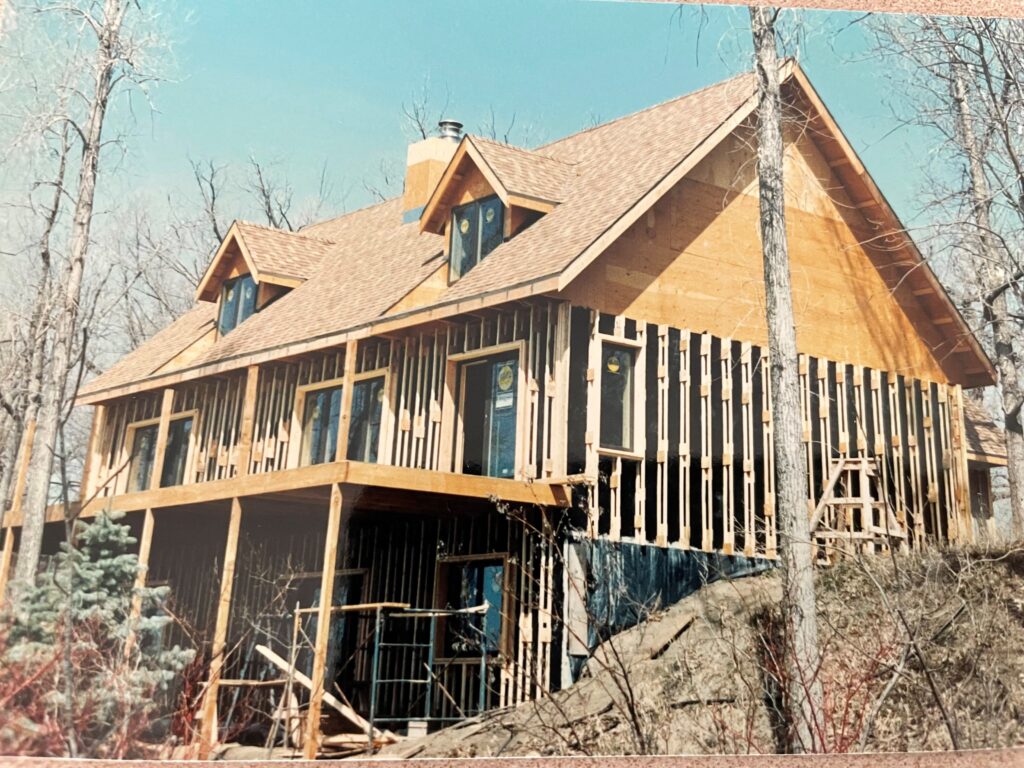

In 1990, Roger developed and built this super insulated, high mass home with concrete block and Larson Trusses strapped onto the wall to provide room for 7 inches of closed cell insulation. The block walls of the home contain a hydronic heating system, The house is easily kept cool in the summer, without AC, by opening the windows at night, allowing the thermal mass to cool down.
Double Thermal Break Wall System
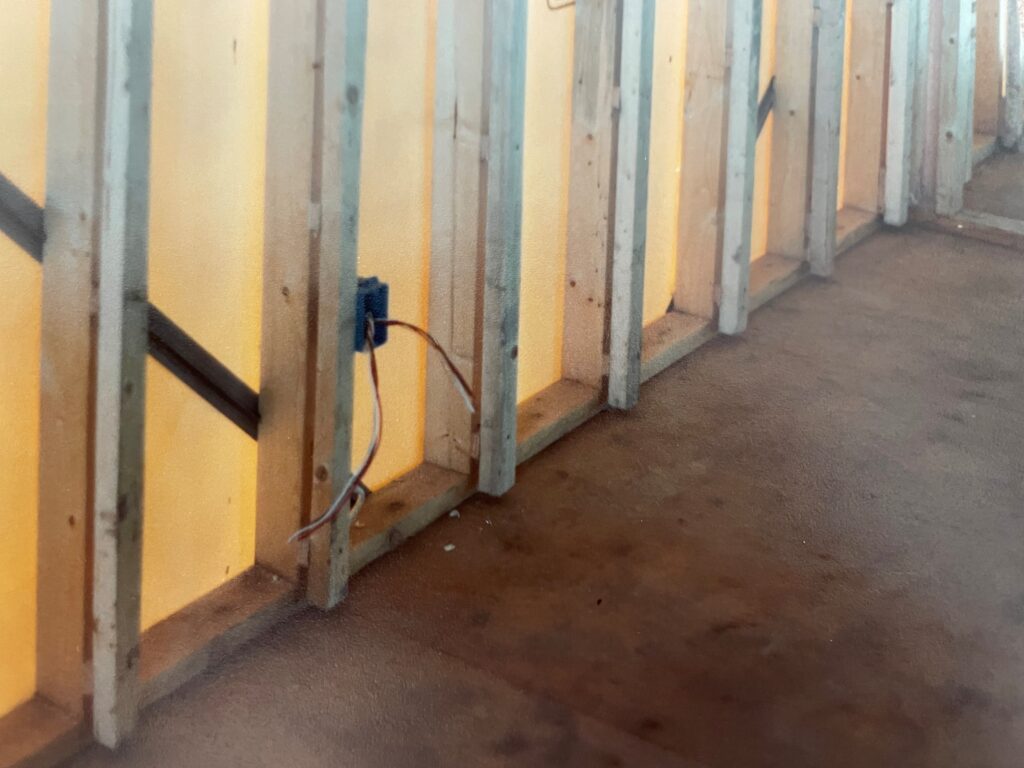

Roger developed and used this Double Thermal Break Wall System in his first Super Home built 1984, pictured above.
Moveable Home
Roger developed this super-insulated, one piece moveable home in 1985. The floor system of this home was engineered to be set on blocks, like a mobile home, so that the owners could place it on a rented lot in a park until they saved enough money to purchase a lot and a foundation, at which time they could take their home and equity with them.
Too often, mobile homes lose value as they age, These moveable homes were built to higher standards than most site built homes.
